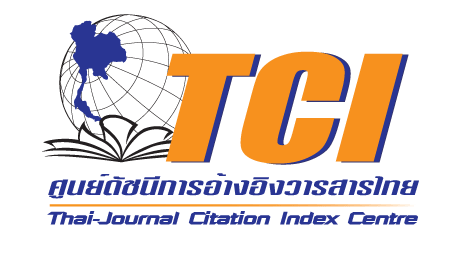Studies the satisfaction towards learning management in Work Integrated Learning (WIL) with suitable according to the attitude of the stakeholders at the Faculty of Management Science, Rambhai Barni Rajabhat University
Keywords:
The satisfaction, Work Integrated Learning (WIL), attitude, stakeholdersAbstract
The research aims 1) to study the satisfaction with integrated learning management while working at the Faculty of Management Science, Rambhai Barni Rajabhat University in accordance with the attitude of stakeholders, 2) to compare satisfaction with integrated learning management while working at the Faculty of Management Science. Rambhai Barni Rajabhat University has been classified by stakeholders as a sample group of 179 people and a questionnaire has received back 127 people, which were divided into 20 faculty members, 81 fourth-year students, and 26 business establishments. The research instrument was a questionnaire. The statistics used in data analysis were frequencies and percentages, standard deviation averages, and one-way ANOVA tests.
The results of the research found that 1) satisfaction with integrated learning management while working at the Faculty of Management Science, Rambhai Barni Rajabhat University in accordance with the attitude of stakeholders overall was at the highest level ( = 4.51) Teachers had the highest level of satisfaction ( They had a high level of satisfaction ( = 4.47 and = 4.43) respectively. 2) Comparison of satisfaction with satisfaction with integrated learning management while working at the Faculty of Management Science, Rambhai Barni Rajabhat University in each aspect satisfaction was not significantly different.
References
กระทรวงการอุดมศึกษา วิทยาศาสตร์ วิจัยและนวัตกรรม. (2562). นโยบายและยุทธศาสตร์การอุดมศึกษา วิทยาศาสตร์ วิจัยและนวัตกรรม พ.ศ. 2563–2570. https://www.mhesi.go.th/index.php/stg-policy/930-2563-2570.html
คณะวิทยาการจัดการ มหาวิทยาลัยราชภัฏเลย. (2562). รายงานผลการจัดการเรียนรู้แบบบูรณาการกับการทำงาน (Work Integrated Learning: WIL). https://anyflip.com/idvh/otye/basic
นิธิภักดิ์ กทิศาสตร์, ธารีรัตน์ ขูลีลัง, และนนทภรณ์ บุญจึงเจริญรัตน์. (2564). แนวทางการพัฒนาการจัดการศึกษาแบบบูรณาการระหว่างการทำงานกับการเรียนการสอน สำหรับสาขาวิชาธุรกิจดิจิทัล คณะวิทยาการจัดการ มหาวิทยาลัยมหาสารคาม. มหาสารคาม: มหาวิทยาลัยมหาสารคาม.
พรนภา เตียสุทธิกุล, พัฒนา พรหมณี, จานนท์ ศรีเกตุ, นาวิน มีนะกรรณ, และสุวุฒิ พงษ์วารินศาสตร์. (2561). การวัดระดับเจตคติในการดำเนินงานด้านการสาธารณสุข. วารสารวไลยอลงกรณ์ปริทัศน์ (มนุษยศาสตร์และสังคมศาสตร์), 8(4), 214-225.
มหาวิทยาลัยราชภัฏกำแพงเพชร. (ม.ป.ป.). แนวทางการจัดการศึกษาเชิงบูรณาการกับการทำงานระดับอุดมศึกษาของประเทศไทย. https://reg.kpru.ac.th/regkpru/gallery/g_data/wil4/w_04.pdf
วาสิณี มหาพีราภรณ์ และวิรงรอง มีศรีสุข. (2562). ความคาดหวังและการรับรู้เรื่องการฝึกงานของนักศึกษาในหลักสูตรสาขาวิชาการจัดการธุรกิจทั่วไป มหาวิทยาลัยศิลปากร [จุลนิพนธ์ไม่ได้ตีพิมพ์]. หลักสูตรสาขาวิชาการจัดการธุรกิจทั่วไป, คณะวิทยาการจัดการ, มหาวิทยาลัยศิลปากร.
วิทยาลัยนานาชาติ มหาวิทยาลัยราชภัฏเชียงใหม่. (2562). แผนการจัดการเรียนรู้แบบบูรณาการกับการทำงาน. https://qa.kpru.ac.th/docqaii/doc/KPRU2562_5.1-1-04.pdf
สุไฮลา หมัดเลียด. (2562). ประสิทธิภาพการปฏิบัติงานด้านสนับสนุนการศึกษาของบุคลากรในสถานศึกษา สังกัดสำนักงานเขตพื้นที่การศึกษาประถมศึกษาปัตตานี เขต 3 [ปริญญาการศึกษามหาบัณฑิตไม่ได้ตีพิมพ์]. สาขาวิชาการศึกษาเพื่อพัฒนาทรัพยากรมนุษย์, มหาวิทยาลัยทักษิณ.
Downloads
Published
How to Cite
Issue
Section
Categories
License
Copyright (c) 2024 CUAST Journal

This work is licensed under a Creative Commons Attribution-NonCommercial-NoDerivatives 4.0 International License.









